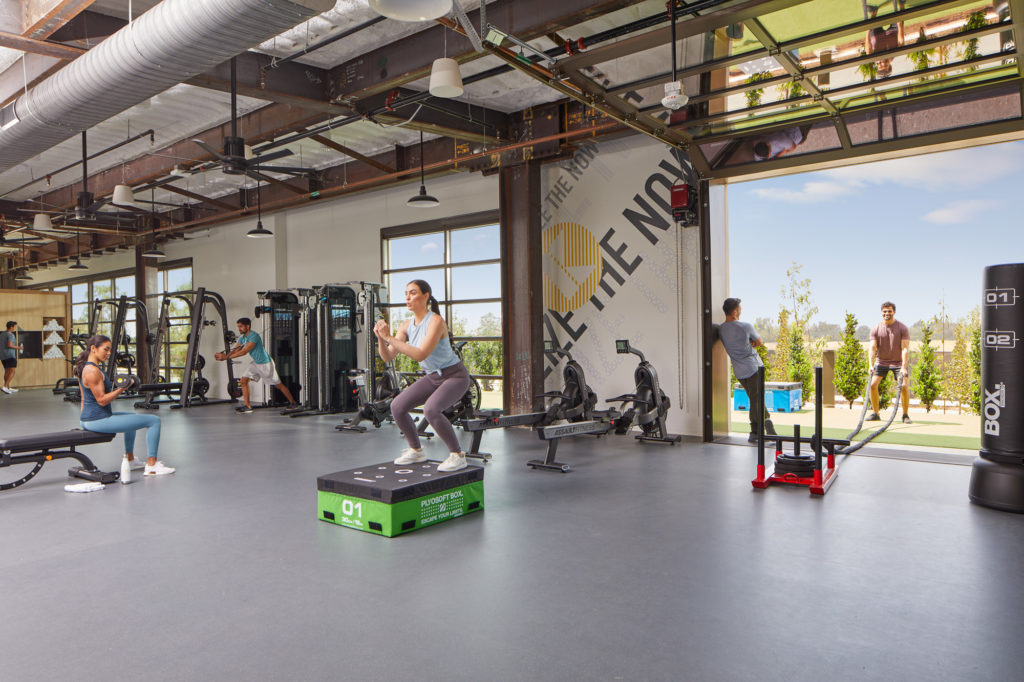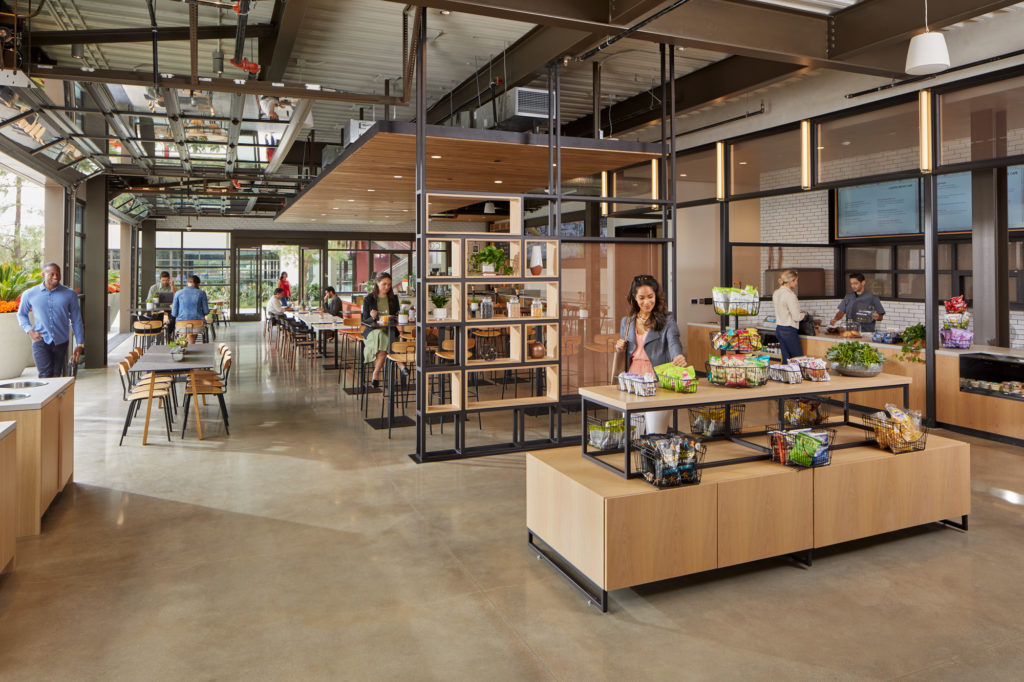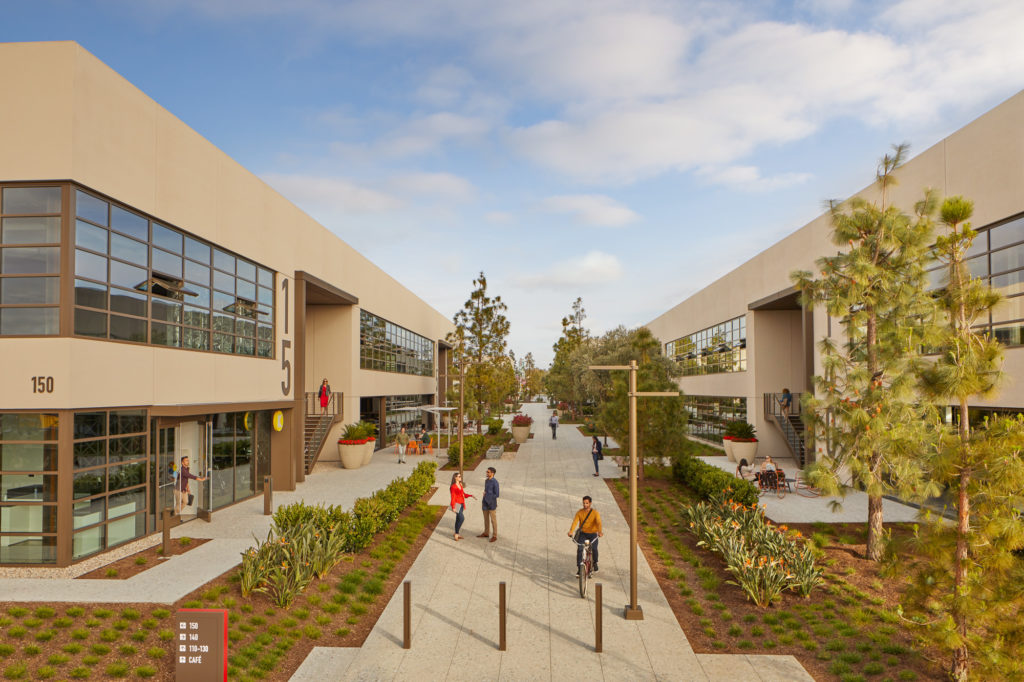Irvine Company’s John Koga on the evolving workplace in the post-pandemic world: “The future is all about the ability to change and adapt.”
Written by: Kevin Brass, LPA
As Irvine Company’s Vice President-Planning & Design for Office Properties, John Koga has led the design of one of the nation’s largest commercial real estate portfolios. He is at the forefront of the evolving workplace, with a long resume focused on architecture and corporate interior design. In an interview with Catalyst, Koga discusses the disappearing line between interior and outdoor spaces, the changing needs of tenants and the challenges ahead.

What is your read on the different predictions for the future workplace?
There are a lot of common thoughts in the industry as to where the new workplace might be headed. The most common trends are related to fresh air, the outdoors and outdoor space connections. The focus is now on customer safety, better personal control of space, and monitoring of the air quality, natural light, and temperature. The industry is headed towards a more people-centric attitude of space making.
Are there specific elements you think are going to become more important?
There are great opportunities to look at existing outdoor environments and think about future utilization that may create new ways of working outdoors. Beyond group or one-on-one meetings outdoors, there could be other workplace events that start to repurpose the outdoors that better integrate outdoor activities into the indoor work environment. Some customers are now taking their indoor activities to the outside to be better connected to the natural environment. With the importance of biophilia in design, this is something that will be considered in the future workplace for a while.
Do you feel like the amenity mix is going to change?
Yes, amenities as we knew them pre-COVID will change. Spatial requirements and safety measures have already affected change to fitness, conferencing and F&B. This change creates opportunities to re-evaluate space usage and customize activities based on user requirements. Tailoring amenities more focused on the customer is our goal. It addresses a need.
Our amenities need to also consider flexibility in planning and program to be able to adapt to change. How do you design something that is flexible but specific enough that it works today and bridges the gap to a future need? This is the challenge. The future is all about the ability to change and adapt. We have been asking ourselves about building program changes.
For example, commercial office to laboratory, office to retail, and parking garages to retail or office. Success in the future relies upon being nimble and adaptive while being responsive to user behavior and industry trends.
Do you think those elements like fitness centers are going to be less important going forward?
I believe fitness will become even more important in the future. Health and wellness trends have spiked over the last year. It’s not only physical wellbeing but mental well-being that’s become important. Following the trends of the workplace, fitness and wellness are also seeking better and direct connections to the outdoors. Activities associated with nature are becoming more prevalent in the industry — outdoor yoga, training, hiking, cycling, outdoor CrossFit, etc. The idea of being better “connected to the earth” is here to stay.
What other initiatives do you think are going to be important going forward?
We have initiated some interesting app-based offerings for our customers that are connecting people and creating communities within our office, retail, and apartment portfolios. I believe technology in the future will be more people-based, providing solutions to address a need and create connected communities.
This technology can adapt quickly to a change in community demographics, business typology, and user interface. Again, change and adaptability in technology will be important in the future.
When it comes to investing in sustainability, do you see an actual ROI in tenant satisfaction and tenant demand?
Yes, in all cases sustainability is important. Our customers place a high value on spaces and buildings that are energy efficient, utilize sustainable materials, are wellness focused, safe, and secure. It is our responsibility to ensure our customers’ needs are being addressed and we are leading the industry in sustainability initiatives. An efficient and healthy workplace environment is our goal.
What is exciting you these days about corporate design?
As an architect and urban planner, scale for me is very important. We are designing places at varying scales that equally impact our customers’ daily lives. From campus office master plans to interior office environments, they all find commonality in addressing the safety, comfort, security, efficiency, and productivity of the workplace. We also find flexibility in the office environments we create to be critical to the future of work. We live in a world of uncertainty so to be nimble is imperative.
For more on transforming the nature of the workplace, read the full LPA Catalyst article HERE.





